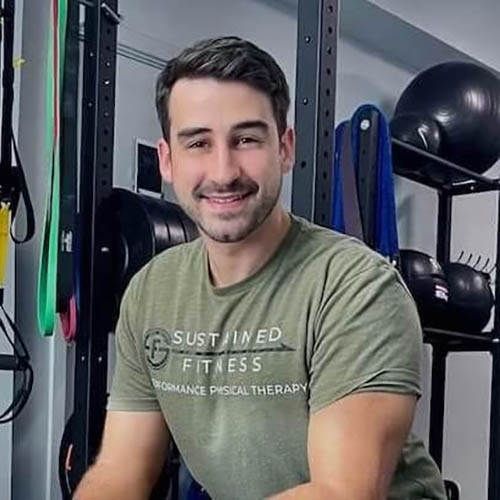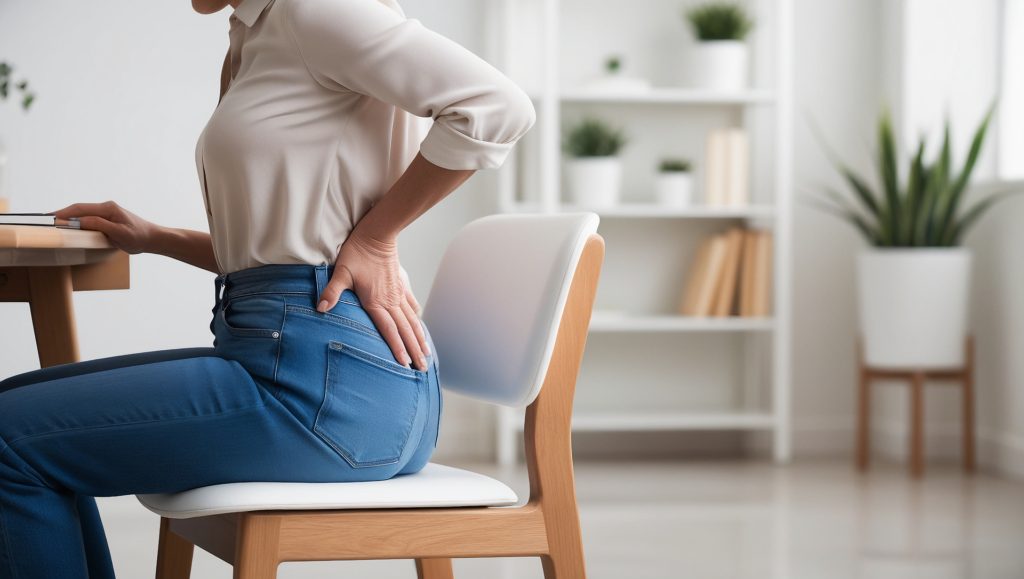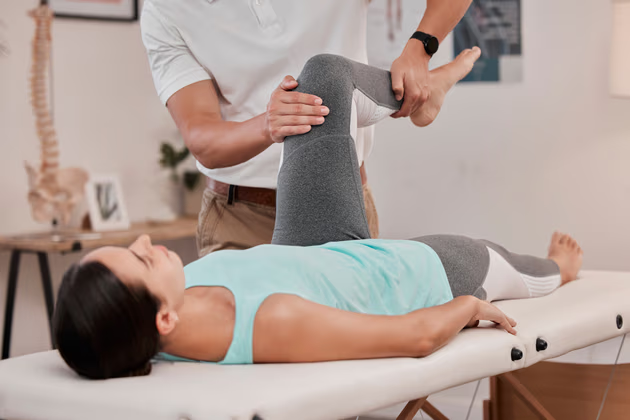If you've ever experienced back pain, you've probably heard that your "poor posture" might be to blame. It's a common belief that slumping, slouching, or sitting incorrectly directly leads to pain and discomfort. But at Sustain Physical Therapy and Performance in Boston's Back Bay, we take a different, evidence-based approach to understanding and treating back …
Does Poor Posture Result in Back Pain? Rethinking the Connection

If you’ve ever experienced back pain, you’ve probably heard that your “poor posture” might be to blame. It’s a common belief that slumping, slouching, or sitting incorrectly directly leads to pain and discomfort. But at Sustain Physical Therapy and Performance in Boston’s Back Bay, we take a different, evidence-based approach to understanding and treating back pain that goes beyond the traditional assumptions about spine alignment and posture.
The Myth of “Poor Posture”
For decades, the concept of “poor posture” has been ingrained in our collective consciousness. We’ve all been told to “sit up straight,” “pull your shoulders back,” or “stop slouching.” These well-intentioned commands suggest there’s a “correct” way to hold our bodies—and that deviating from this ideal inevitably leads to pain and injury.
But here’s the truth that might surprise you: there’s very little scientific evidence supporting the idea that specific postures directly cause pain. In fact, the human body is remarkably adaptable and can function well in a variety of positions, even those that include rounded shoulders, forward head posture, or a swayback stance. This challenges the traditional thinking behind the question: how can poor posture result in back pain?
What The Research Actually Shows
Recent research has consistently shown that the relationship between posture and pain is much more complex than previously thought:
- Studies have found that many people with “textbook perfect” posture experience chronic back pain
- Conversely, many individuals with postures that would be classified as “poor” remain pain-free throughout their lives
- Some of the world’s top athletes and performers have what would traditionally be considered “poor posture,” yet they achieve remarkable physical feats
Take professional powerlifters, for example. Many adopt postures during lifts that would make a traditional physical therapist cringe—yet they can lift hundreds of pounds without injury. Similarly, many desk workers with “perfect” posture still develop back pain from factors like sedentary lifestyle, muscle fatigue, or lack of physical activity. These examples raise a broader question: how can poor posture result in back pain for some, but not for others?
Pain Is Multifactorial
At our Back Bay physical therapy practice, we understand that pain rarely has a single cause. Instead, it’s typically the result of multiple factors working together:
- Physical factors (strength, mobility, previous injuries, spinal compression)
- Lifestyle factors (stress, sleep quality, physical activity levels, smartphone usage)
- Psychological factors (anxiety, beliefs about pain, fear of movement)
- Social factors (work environment, ergonomic furniture, support systems)
This multifactorial view of pain helps explain why two people with identical postures can have completely different experiences—one might be in severe pain while the other feels perfectly fine.
Building Capacity Instead of Fixing “Flaws”
Rather than focusing on “correcting” your posture, our approach at Sustain Physical Therapy and Performance is centered on building your body’s capacity and resilience. We believe in:
- Expanding your movement options: Developing comfort and strength in various positions
- Building physical resilience: Increasing your body’s ability to handle different types of stress and muscle strain
- Challenging limiting beliefs: Helping you understand that your body isn’t fragile or broken due to postural habits like slouching or text neck
- Gradual exposure to varied movements: Safely exploring movements you might have been avoiding due to pain, discomfort, or posture-related fear
How Our Boston Back Bay Practice Approaches Back Pain Differently

When you visit our physical therapy practice in Boston’s Back Bay, you won’t hear us say “your posture is terrible” or “no wonder you’re in pain.” Instead, you’ll experience an approach that:
- Treats you as an individual with unique needs, not a set of postural “problems” to fix
- Focuses on what you CAN do rather than what you “shouldn’t” do
- Builds confidence in your body’s capabilities, regardless of your posture or spine alignment
- Develops strength and mobility that transfers to your daily activities
- Empowers you with knowledge about pain science and how your body actually works
Real Success Stories from Back Bay Residents
Maria, a software developer who works in Back Bay, came to us after being told by multiple providers that her “hunched posture” from computer work was causing her chronic back pain. Previous treatments focused exclusively on “fixing” her posture with stretches and ergonomic adjustments, but provided only temporary relief.
Our approach was different. We helped Maria build strength in various positions, gradually exposing her to movements she had been avoiding. We helped her understand that her body wasn’t damaged by her work posture, but rather needed more movement variety and strength. Six weeks later, Maria was pain-free and confident in her body’s capabilities—without having to maintain “perfect posture” at all times.
Moving Beyond the Posture Paradigm
So, how can poor posture result in back pain? The answer isn’t as straightforward as we once thought. While certain sustained positions like unsupported sitting position, tech neck, or tense posture might contribute to discomfort for some individuals, the notion that specific postures are inherently “bad” or directly cause pain isn’t supported by current evidence.
Instead of viewing your body through a lens of postural “rights” and “wrongs,” we invite you to consider a more empowering perspective: your body is adaptable, resilient, and capable of thriving in various positions when given the right support and training. This shift in mindset is key to managing chronic back pain, preventing muscle imbalance, and addressing issues like degenerative disc disease or spinal misalignment.
Visit Our Back Bay Physical Therapy Practice

If you’re experiencing back pain and tired of being told it’s all because of your “poor posture,” we invite you to experience our different approach at Sustain Physical Therapy and Performance in Boston’s Back Bay. Our evidence-based methods focus on building you up, not making you feel broken.
Contact us today at (617) 936-8631 or visit our location at 364 Boylston Street in Boston, MA to schedule an initial assessment. Discover how our unique approach to physical therapy can help you move beyond pain and limitations—regardless of your posture.
Sustain Physical Therapy and Performance is located in the heart of Boston’s Back Bay, serving residents and professionals throughout the area with innovative, evidence-based physical therapy services focused on empowerment rather than “fixing” perceived flaws.
FAQs
What is the correct posture for lower back pain?
There’s no one-size-fits-all “correct” posture for lower back pain. The best posture is one that supports movement variety, reduces prolonged static positions, and feels comfortable. Working with a physical therapist can help you find supportive positions while improving core muscle strength and spine alignment.
Can you correct years of bad posture?
Yes—although “correct” might not mean what you think. You can absolutely improve mobility, strength, and awareness after years of poor posture. Through consistent movement, exercise, and postural education, many people reduce pain and gain function without needing to “perfect” their posture.
Can bad posture cause back pain?
Bad posture isn’t a guaranteed cause of pain. Some people with “bad posture” never develop pain, while others do. Back pain is complex and influenced by strength, stress, sleep, and more.
Dr. Adam Babcock PT, DPT
“We Help Active Adults Quickly Recover From Pain Or Injury So They Can Stay Active, Get Back To What They Love To Do, and Do It For Decades”






